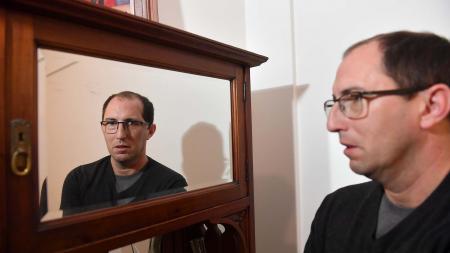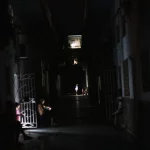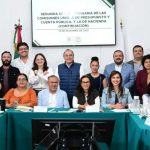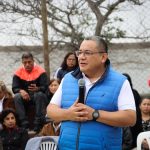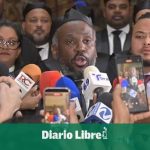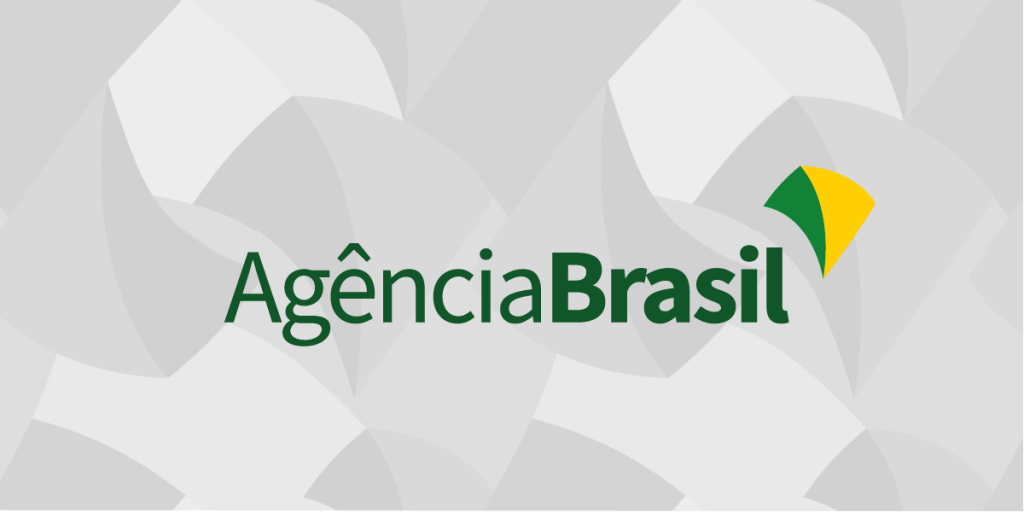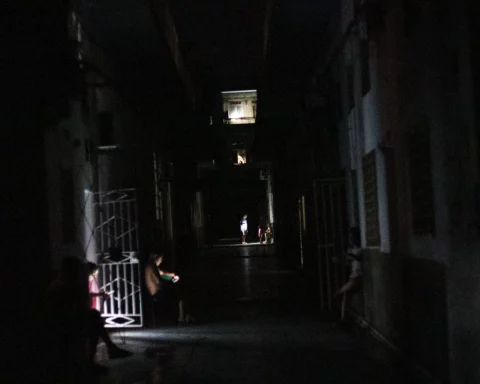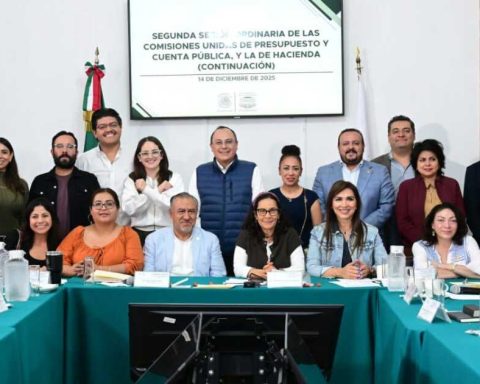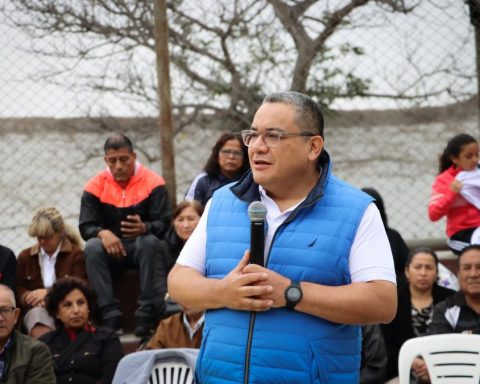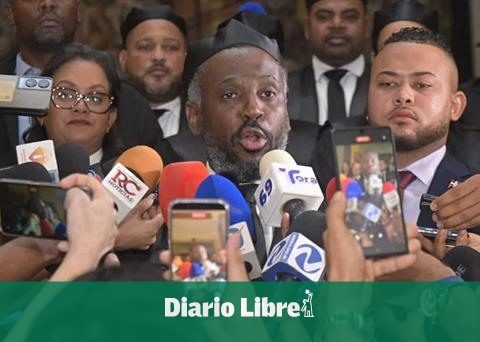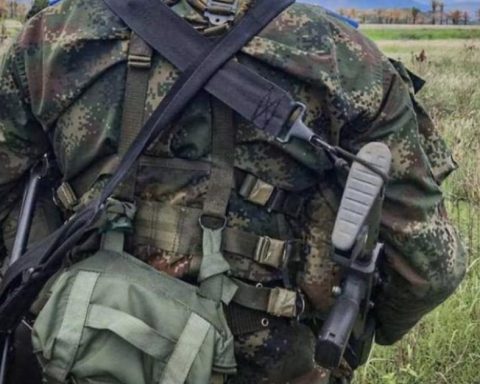Juan Manzano Small survived a cerebrovascular accident (CVA) when he was 40 years old that left him “15 minutes from death or from becoming a vegetable,” the man said a decade later about the episode in which rapid assistance was key , which according to neurology specialists is what saves lives and reduces the severity of sequelae.
“I was 15 minutes away from dying or being a vegetable,” Small, 50, said of the “miracle” of surviving a hemorrhagic stroke caused by bleeding from a brain aneurysm that left him with multiple sequelae, including visual impairment and motor limitations on the left side of his body.
She also had to relearn how to walk and eat, she lost her job, and, with a lot of willpower, motivated by her loved ones, she managed to maintain a rehabilitation that has been going on for ten years with significant progress.
“It’s a matter of minutes”Leonardo González, head neurologist of the stroke unit at Ramos Mejía Hospital -a primary stroke center certified by the World Stroke Organization- told Télam, stressing the importance of quickly calling the emergency service in the event of any symptoms of this disease.
world stroke day
Within the framework of the World Stroke Day that is commemorated this Saturday, the specialist who is part of the cardiovascular disease work team of the Argentine Neurological Society (SNA) was categorical: “The prognosis and the future of the patient depends a lot on how long late in taking a therapeutic approach”.

Stroke is a disease caused by an alteration in the blood flow that goes to the brain that occurs when a vessel in the circulation is obstructed (ischemic stroke, the most frequent) or ruptures (hemorrhagic stroke).
It represents the third cause of death and the first cause of disability in the country, according to data from the Ministry of Health.
“Having a stroke upsets your life, work, family, disability,” Small defined in dialogue with Télam.
In Argentina, 2% of the population over 40 years of age had a stroke, which represents more than 340 thousand people; and each year there are between 50 and 60 thousand cases and 18 thousand associated deaths, according to the Population Epidemiological Study on Cerebrovascular Accidents carried out by Fleni and the Finep and Aderi foundations.
Worldwide, it is estimated that a stroke occurs every 9 minutes and there are about 14 million cases per year, of which 5.5 million cause death, indicated from the Argentine Federation of Cardiology (FAC).

A before and after stroke
Before the stroke, Juan was “hyperactive”, he traveled for work as a Bachelor of Business Administration, he lived with who today is his ex-partner and his two daughters and a son, he drove his car and felt “a lot of stress”.

The symptom she had was expressed at the least expected moment: while serving the ice cream she had bought to celebrate that the oldest daughter – 6 years old at the time – had brought her first test from school and the youngest – 6 months old – was leaving the bottle, suddenly had a “very intense” headache that was like “a drill”, he described.
Before the event, Juan was quickly assisted by his partner and urgently transferred to the Mater Dei sanatorium. Upon arrival, he had lost consciousness and had seizures. They did a tomography, with which they confirmed that he had a stroke with a prognosis that “was not good.”
To decompress blood pressure in the brain, he had a craniotomy and then spent 14 days in an induced coma in the sanatorium, and another 70 in intensive care.
“We all thought that he was going to die, we had to wait for him to come out of the coma and although his stroke was on the right side and there were things that were not going to be affected such as speech and memory, there were things that were not known”explained Juan’s older sister, María Manzano Small (52), who accompanied him from the first moment.
“When I woke up I thought I had had a car accident. It was all very confusing, the left half of my body was totally paralyzed, I couldn’t speak, I was connected to machines and cables,” he recalled, describing how “exasperating” it was to go from a “infernal hyperactivity” to the slowness of the initial rehabilitation in which they gave him liquids with thickeners so that he would not drown and he could not sit down because he fell.
“The despair was total and the confusion gigantic, until a time came when I had to go home from the sanatorium,” he said.

The importance of rehabilitation
There, the rehabilitation stage began with a multidisciplinary team made up of occupational therapists, kinesiologists, and neuro-ophthalmologists who worked together with the neurologist.
“The day he sent the video walking down the corridor of the sanatorium for the first time was tremendous. I cried, because we didn’t know if it was going to happen or not,” María said excitedly.
Juan was motivated to relearn how to walk so did his youngest daughter, who was already one year old. For him, the strength that his three children transmitted to him was “essential” to get ahead.
The affection and support of his three sisters, his mother and father, who at the age of 72 used to go home every afternoon to practice “brain gymnastics” with multiplying and dividing accounts, were key to Juan gradually recovering his autonomy.
“Stroke can occur at any time in life, but as the age of 60 increases, the risk increases,” neurologist Virginia Pujol Lereis, deputy head of the Fleni Comprehensive Vascular Neurology Center, explained to Télam.
And he warned that a small increase in cases was observed in populations over 40 years old, “which was not seen before”, associated with the increase in risk factors.
“Stroke can happen at any time in life, but as you get past 60, your risk increases.”Virginia Pujol Lereis, neurologist
Main risk factors
Among the main modifiable risk factors are uncontrolled high blood pressure, a condition that “explains by itself 1 in 3 cases of stroke,” according to Health; and smoking, high cholesterol, diabetes, arrhythmias, sedentary lifestyle, obesity, sleep apnea, and drug abuse.
There are also non-modifiable risk factors such as age, genetics, and personal history of a prior stroke.
The symptoms appear suddenly and, depending on the location and magnitude of the stroke, are manifested in difficulties in motor skills or sensitivity, generally in one half of the body; speech disturbance; vision problems, loss of coordination and/or balance, dizziness, unusual headache or altered cognitive abilities.
There are also small and multiple strokes, called lacunar infarcts, which can cause progressive deterioration of brain function without immediate symptoms.
Today Juan integrates the association “For a stroke free life” and accompanies other patients to find a “place” and a “beautiful life” in addition to raising awareness about this disease.
Although he regrets not being able to drive his car again, he values ”the little things in life” such as being able to use his left hand to tie his shoes or cut his food and, above all, having had the opportunity to rehabilitate himself, because “there are people He doesn’t have a chance.”
